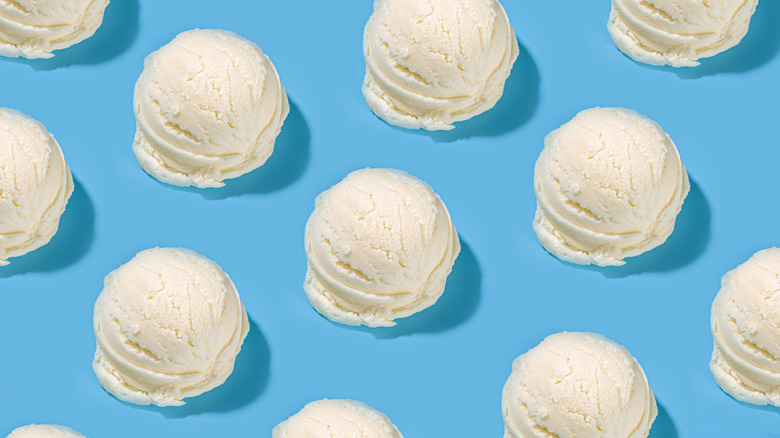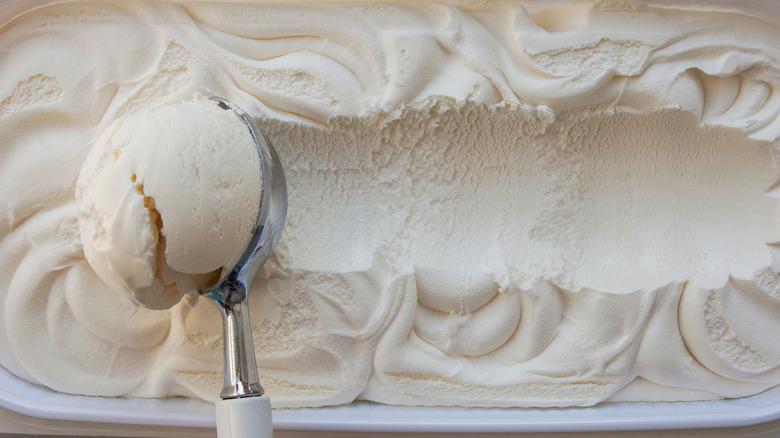What Makes Soft Serve Taste Different From Hard Ice Cream?
I scream, you scream ... You know how it goes. Everybody loves ice cream! It's the great equalizer. But, there is one heated debate that threatens to create a rift through this creamy dream world: soft serve or hard ice cream? There is a difference, and the difference is massive — ask anyone carrying a waffle cone on a hot day.
Which side you're on doesn't really matter as much as why. Texture is the most obvious difference, but hardcore ice cream fans know there's also a difference in the fundamental flavor profile of a soft serve vanilla cone versus a hard pack vanilla cone. Why? It's all just ice cream, isn't it? Kinda! But there's a key reason for the unique tastes — actually, there are two reasons. Let's break it down.
The ingredients
Surprisingly, there's not a secret ingredient that sets soft serve and hard pack apart. Despite their fundamentally different presentations, soft serve and hard ice cream are made from pretty much the same stuff. Baskin-Robbins chocolate ice cream, for example, contains the basics you'd probably expect: cream, nonfat milk, sugar, corn syrup, chocolate liquor, and cocoa.
It also contains an array of other ingredients, which are much harder to pronounce, but these are usually present in soft serves as well. Soft serve ice cream from Mcdonald's and Dairy Queen and the hard pack ice cream from Baskin-Robbins all contain cellulose gum (the texturizer responsible for that firm but creamy mouthfeel explains Forbes). They also contain carrageenan (a carbohydrate extracted from seaweed), maltodextrin (which adds sugar but no additional sweetness), and guar gum (a thickener), reports HuffPost.
But if they're made of mostly the same ingredients, what makes hard and soft serve ice creams taste different?
Butterfat and air make all the difference
Butterfat, aka milkfat (the fat content in milk), is the secret ingredient responsible for the flavor difference.
The International Dairy Foods Association requires all standard ice cream to contain at least 10% butterfat. Generally, hard ice cream has a liquid cream base containing 10-18% butterfat, while soft serve ice cream contains less milkfat: typically 3-6% (via Vegan Softice). The higher the butterfat content, the richer the ice cream. If you make your own ice cream at home, for instance, it can contain up to 20% butterfat, according to Ice Cream Geek.
There's another surprising key player that influences flavor: air. Ice Cream Geek explains that if there's too much air added, your ice cream will lack substance. The outlet compares the product to eating flavored air. On the other hand, if there's too little air, the ice cream will be thick and dense like its frozen solid. Soft serve contains more air than hard pack, but both fit in between these extremes.
So there is your answer. The primary flavor difference between soft serve and hard ice cream is because of the amount of butterfat and air. Hard pack is heavier on butterfat, and soft serve is heavier on air.
Next time you cruise by the stand on the corner and scream for ice cream, take a second while you inhale to think about why your waffle cone tastes like it does — and then keep on screaming.


